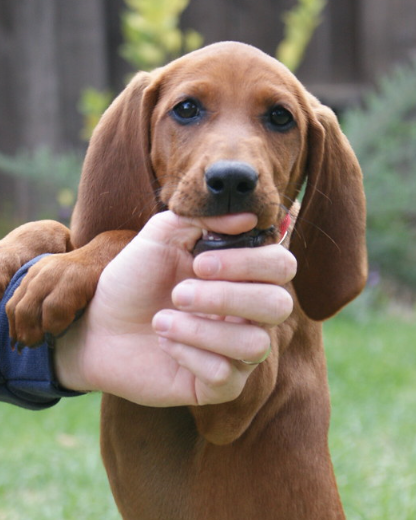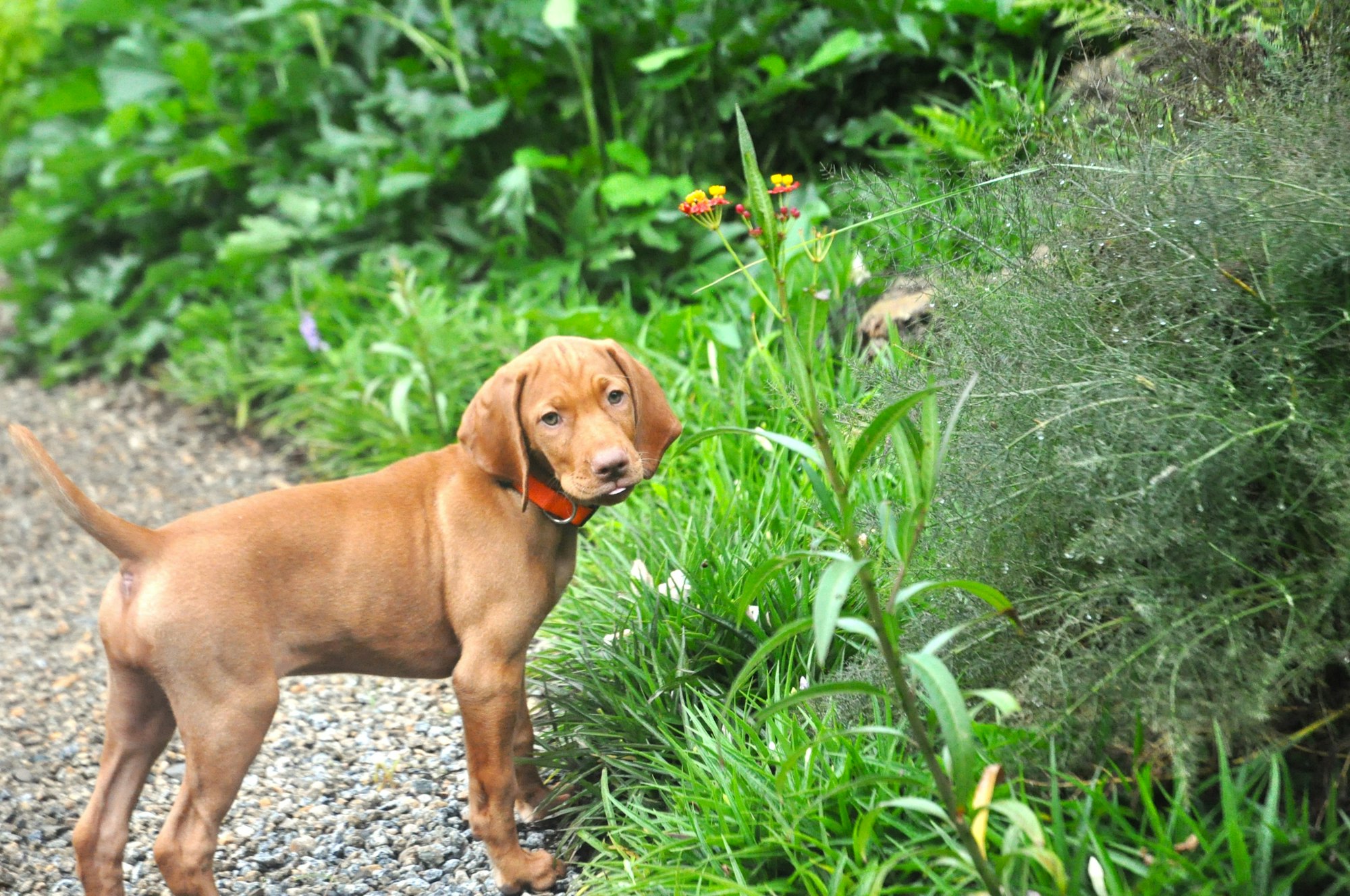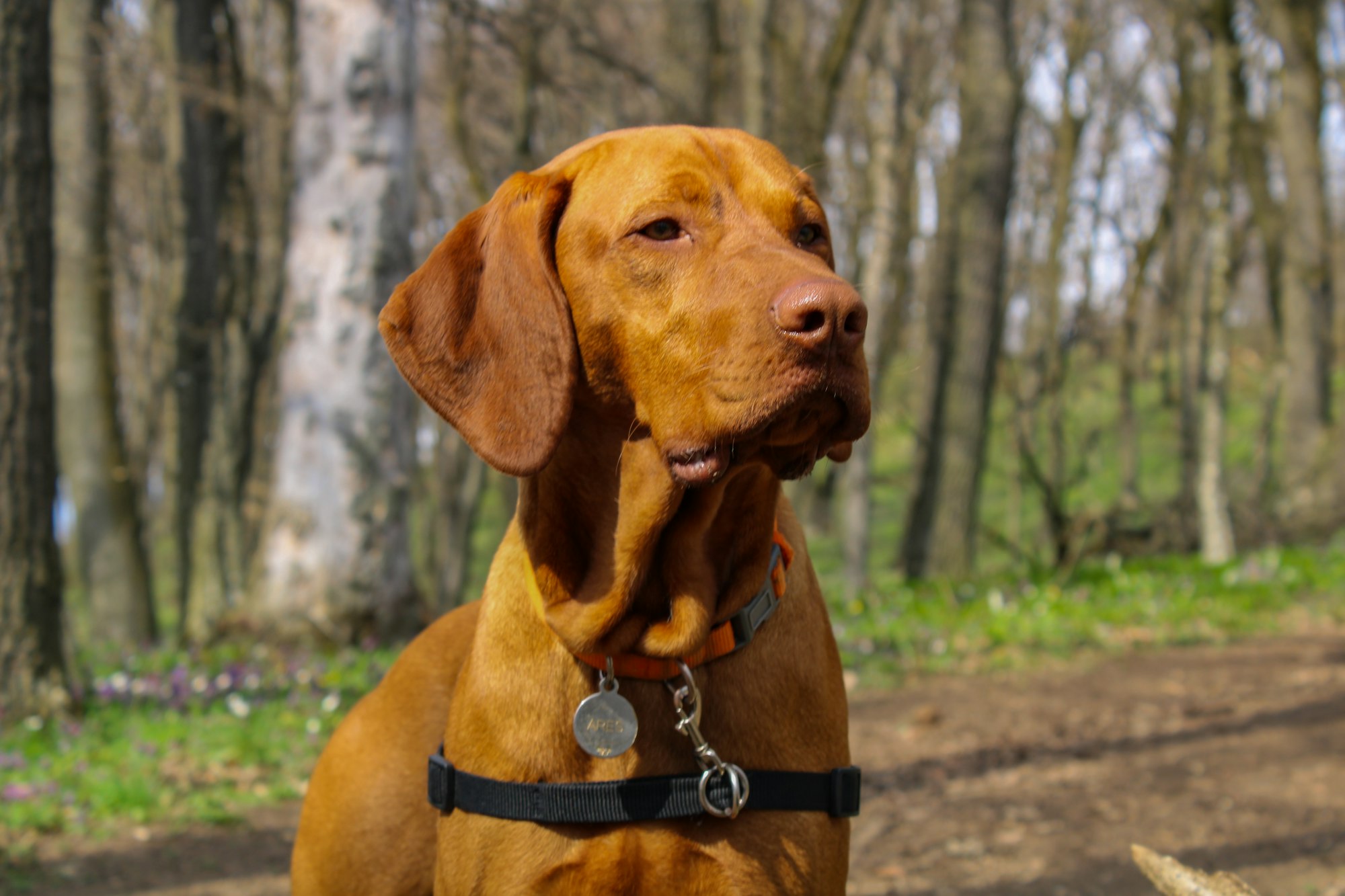When it comes to loyal and versatile canine companions, the Redbone Coonhound stands out among the pack. Known for its striking red coat and exceptional hunting abilities, this breed has captured the hearts of many dog enthusiasts. In this article, we'll delve into the history, physical characteristics, temperament, training, health concerns, grooming, and more, exploring why the Redbone Coonhound is not only a fantastic hunting partner but also a cherished family pet.
History of Redbone Coonhound
The Redbone Coonhound traces its roots back to the United States, specifically the Southern region. It is believed to have originated from red foxhounds brought to America by Scottish immigrants in the late 18th century. Over time, breeders selectively bred these dogs for their scenting abilities and tenacity in trailing and treeing raccoons. The Redbone Coonhound's bloodline was additionally refined by integrating other breeds such as Irish hounds and bloodhounds, resulting in the distinctive breed we know today.

Physical Characteristics
The Redbone Coonhound is a medium to large-sized dog with a well-muscled and muscular build. They have a striking red coat that is short, thick, and glossy, which acts as protection against different weather conditions. With their floppy ears, explicit brown eyes, and gentle expression, Redbone Coonhounds retains an undeniable charm. Adult males normally weigh between 50 to 70 pounds (22 to 32 kg), while females typically range from 45 to 65 pounds (20 to 29 kg).
Temperament and Personality
Renowned for their friendly and sociable nature, Redbone Coonhounds make excellent companions. They are known for being affectionate, loyal, and eager to please their owners. These dogs thrive on human companionship and generally get along well with children and other pets when properly socialized. However, it's important to note that their hunting instincts are deeply ingrained, so supervision may be necessary when introducing them to smaller animals.
Training and Exercise
Due to their hunting background, Redbone Coonhounds possess an inherent drive and determination. Training them requires a consistent and patient approach, focusing on positive reinforcement techniques. Engaging them in regular mental and physical exercise is crucial to keep them happy and balanced. Long walks, jogging, and activities that stimulate their sense of smell, such as scent games or tracking exercises, are highly beneficial for their well-being.

Health Concerns
When considering the health of Redbone Coonhounds, it's important to note that they are generally a robust and healthy breed. However, like any dog, they may be prone to certain health issues. Being aware of these potential concerns can help owners take proactive measures to ensure their pet's well-being. Here are some common health concerns associated with Redbone Coonhounds:
1. Hip Dysplasia: This condition occurs when the hip joint does not develop properly, leading to joint instability and eventual arthritis. Regular exercise, maintaining a healthy weight, and providing joint supplements can help manage hip dysplasia.
2. Eye Problems: Redbone Coonhounds may be susceptible to various eye conditions, including cataracts, progressive retinal atrophy, and cherry eye. Routine eye examinations by a veterinarian can help detect and address these issues.
3. Ear Infections: With their floppy ears, Redbone Coonhounds are prone to ear infections. Regular cleaning and inspection of the ears can help prevent infections. It's essential to dry the ears thoroughly after swimming or bathing to minimize moisture accumulation.
4. Obesity: Redbone Coonhounds have a tendency to gain weight if not provided with adequate exercise and a balanced diet. Obesity can lead to various health problems, including joint issues and diabetes. Maintaining a healthy weight through portion control and regular exercise is vital.
5. Bloat: Also known as gastric torsion or twisted stomach, bloat is a life-threatening condition that can affect deep-chested breeds like Redbone Coonhounds. Feeding them smaller meals throughout the day, avoiding exercise immediately after meals, and using elevated feeding bowls can help reduce the risk of bloat.
Regular veterinary check-ups, proper nutrition, regular exercise, and maintaining a clean and healthy environment are essential for ensuring the overall well-being of Redbone Coonhounds.
Grooming and Care
Grooming a Redbone Coonhound is relatively easy due to their short and dense coat. Here are a few grooming tips to maintain your Redbone Coonhound looking and feeling their best:
1. Brushing: Despite their short coat, Redbone Coonhounds benefit from frequent brushing to release loose hair and hold their coat shiny. A rubber grooming mitt or a soft-bristle brush can be used to extract dirt and debris.
2. Bathing: Redbone Coonhounds generally have a clean and odor-free coat. Bathing should only be done when essential to avoid stripping the natural oils from their skin. Use a mild dog shampoo and entirely rinse to prevent any residue.
3. Nail Trimming: Regular nail trims are crucial to prevent overgrowth, distress, and potential injuries. Trim the nails utilizing a dog nail trimmer or seek skilled help if you're unsure.
4. Dental Care: Brushing your Redbone Coonhound's teeth regularly helps maintain good oral hygiene and prevents dental issues. Use a dog-friendly toothbrush and toothpaste to keep their teeth clean and healthy.
5. Ear Cleaning: Due to their floppy ears, Redbone Coonhounds are prone to ear infections. Clean their ears regularly with a veterinarian-recommended ear-cleaning solution. Gently wipe away dirt and debris, taking care not to insert anything deep into the ear canal.
By incorporating regular grooming practices into your Redbone Coonhound's routine, you can help keep them clean, comfortable, and healthy.

Redbone Coonhound as a Family Pet
The Redbone Coonhound's loyal and friendly nature makes it an ideal family pet. Here are some explanations of why this breed thrives in a family environment:
1. Affectionate and Loving: Redbone Coonhounds have a powerful bond with their household members. They enjoy being part of family activities and are known for their loving nature. Whether it's cuddling on the couch or playing on the lawn, they love being around their human companions.
2. Good with Children: Redbone Coonhounds are commonly good with children. They are patient and gentle, making them suitable playmates for children. However, it's necessary to supervise interactions between young kids and dogs to confirm mutual respect and safety.
3. Sociable with Other Pets: With proper socialization, Redbone Coonhounds can get along well with other pets in the household. Whether you have cats, other dogs, or small animals, early introductions and gradual acclimation can help foster positive relationships.
4. Playful and Energetic: Redbone Coonhounds have a playful and energetic disposition. They love engaging in physical activities and play sessions with their family members. Providing them with regular exercise and mental stimulation helps positively channel their energy.
5. Watchful and Protective: While Redbone Coonhounds are not typically guarding dogs, they have a keen sense of observation. They will alert their family to any potential threats or unfamiliar situations. Their deep loyalty makes them devoted protectors of their loved ones.
Remember that Redbone Coonhounds are an active breed, and they require regular exercise and mental stimulation. Engaging them in activities such as long walks, jogging, or interactive games will keep them physically and mentally stimulated, preventing boredom and potentially destructive behaviors.
Redbone Coonhound in Hunting
The Redbone Coonhound's history as a hunting breed is deeply rooted. They excel in tracking and treeing games, particularly raccoons. Here are some characteristics that make them exceptional hunting companions:
1. Scenting Abilities: Redbone Coonhounds possess an incredible sense of smell. Their acute scenting abilities allow them to track and trail game with precision. Their determination and focus make them highly efficient in locating and treeing raccoons.
2. Tenacity: Redbone Coonhounds are known for their relentless drive and decisiveness when on the hunt. They have the energy to keep going for extended periods, even in challenging terrain. Their determination and never-give-up perspective are highly valued in hunting tactics.
3. Versatility: While the Redbone Coonhound is mainly associated with raccoon hunting, they can also be used for other game such as squirrels, cougars, and even bears. Their versatility as a hunting species makes them a useful asset to hunters in various stages.
4. Voice: Redbone Coonhounds have a distinctive and melodious bay. This vocalization is an important trait during hunts, as it helps hunters locate the dog and follow the trail. Their baying is not only functional but also adds to the allure of their hunting prowess.
It's essential to note that not all Redbone Coonhounds are actively used for hunting. Many individuals of this breed thrive as beloved family pets, participating in activities such as obedience trials, scent work, and recreational tracking.
Famous Redbone Coonhounds
The Redbone Coonhound breed has produced several remarkable dogs that have made their mark in various fields. Here are a few famous Redbone Coonhounds:
1. "Tennessee Lead": Known as the "father of the breed," Tennessee Lead is considered the foundation sire of the modern Redbone Coonhound. His lineage and contributions have had a lasting impact on the breed's development.
2. "Ruby": Ruby was a Redbone Coonhound known for her exceptional scenting abilities and tracking skills. She gained fame for her role in search and rescue operations, helping locate missing persons and providing comfort to those in distress.
3. "Penny": Penny was a Redbone Coonhound who gained recognition as a therapy dog. She brought joy and comfort to people in hospitals, nursing homes, and schools, showcasing the breed's gentle and compassionate nature.
4. "Stylish Redbone": Stylish Redbone was a renowned show dog, winning numerous titles and accolades in conformation competitions. She exemplified the breed's standard and showcased their beauty, structure, and presence in the show ring.
These famous Redbone Coonhounds have not only showcased the breed's abilities but also contributed to its recognition and popularity in various domains.
Conclusion
In conclusion, the Redbone Coonhound is a remarkable breed known for its loyalty, versatility, and hunting prowess. As family pets, they exhibit a loving and sociable nature, making them ideal companions for households with children and other pets. Their playful and energetic disposition requires regular exercise and mental stimulation to keep them happy and balanced. When it comes to hunting, Redbone Coonhounds possess exceptional scenting abilities, tenacity, and versatility, making them valuable assets in the field.
Their distinctive voice adds to their allure and aids hunters in tracking the game. It's important to note that while Redbone Coonhounds have a rich hunting heritage, they can also excel in various other activities and roles, such as therapy work, obedience trials, and conformation shows. Whether as a cherished family pet or a skilled hunting partner, the Redbone Coonhound brings joy, loyalty, and companionship to the lives of those fortunate enough to share their journey.
FAQs about Redbone Coonhounds
Here are some frequently asked questions about Redbone Coonhounds:
1. Are Redbone Coonhounds good with children?
Yes, Redbone Coonhounds are normally good with children. They have a patient and soft nature, making them proper playmates for kids. However, it's critical to watch interactions between immature children and dogs to ensure mutual respect and safety.
2. Do Redbone Coonhounds get along with other pets?
With good socialization, Redbone Coonhounds can get along well with other pets in the family. Early introductions and gradual acclimation can help foster positive relationships. However, it's important to note that some Redbone Coonhounds may have a strong prey drive, so caution should be exercised around smaller animals.
3. How much exercise do Redbone Coonhounds need?
Redbone Coonhounds are an active breed that requires regular exercise to keep them physically and mentally stimulated. Daily walks, jogging, or interactive play sessions are recommended to fulfill their exercise needs. Providing them with ample opportunities to release their energy helps prevent boredom and potentially destructive behaviors.
4. Are Redbone Coonhounds easy to train?
Redbone Coonhounds are clever dogs that are generally eager to delight their owners. With constant training techniques that focus on positive reinforcement and rewards, they can be instructed effectively. However, it's necessary to be patient and uniform, as they can be independent-minded at times.
5. Do Redbone Coonhounds bark a lot?
Redbone Coonhounds have a distinctive and melodic bay, which is a part of their hunting legacy. They are known to be spoken dogs, and they may bark or howl when thrilled or when they sense something uncommon. Early training and socialization can assist in managing their barking movements.
6. Do Redbone Coonhounds require a lot of grooming?
Redbone Coonhounds have a short and dense coat that is relatively low maintenance. Regular brushing helps remove loose hair and keeps their coat shiny. Occasional bathing is only necessary when they get dirty, as they naturally have a clean and odor-free coat. Routine care such as nail trimming, dental hygiene, and ear cleaning should also be included in their grooming routine.
7. Are Redbone Coonhounds suitable for apartment living?
Redbone Coonhounds are vigorous and energetic dogs that require ample area to exercise. While they can adapt to apartment living with sufficient exercise, it's important to provide them with regular outdoor activities to prevent restlessness and boredom. Access to a secure yard or nearby parks for exercise is beneficial.
8. How long do Redbone Coonhounds typically live?
On average, Redbone Coonhounds have a lifespan of 11 to 12 years. With proper care, a healthy diet, regular exercise, and routine veterinary check-ups, they can enjoy a long and fulfilling life.
Remember, each dog is an individual, and their behavior and needs can vary. It's important to consult reputable breeders or rescue organizations, as well as interact with Redbone Coonhounds, to gain a better understanding of this breed before deciding to bring one into your home.
For more helpful articles about pet-parenting tips, check out the Off Leash blog at TryFi.com.
Want to know more about TryFi.com? The Fi Dog Collar is a GPS tracking collar that not only keeps track of your dog’s location, activity levels, and sleep patterns, but it also alerts you if your dog escapes your backyard. This is the fastest way to find your dog after an escape. Try the Fi Dog Collar today!

